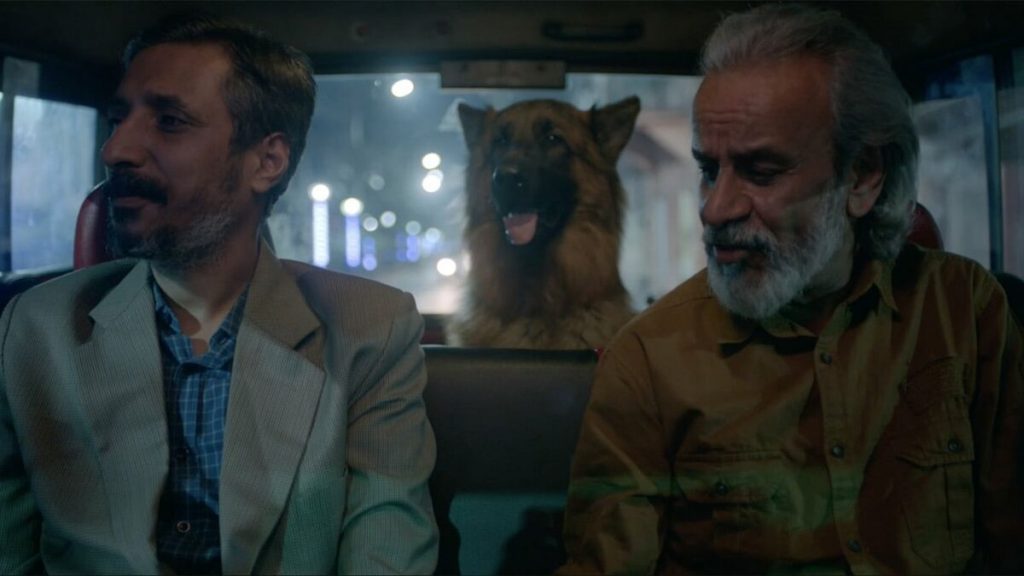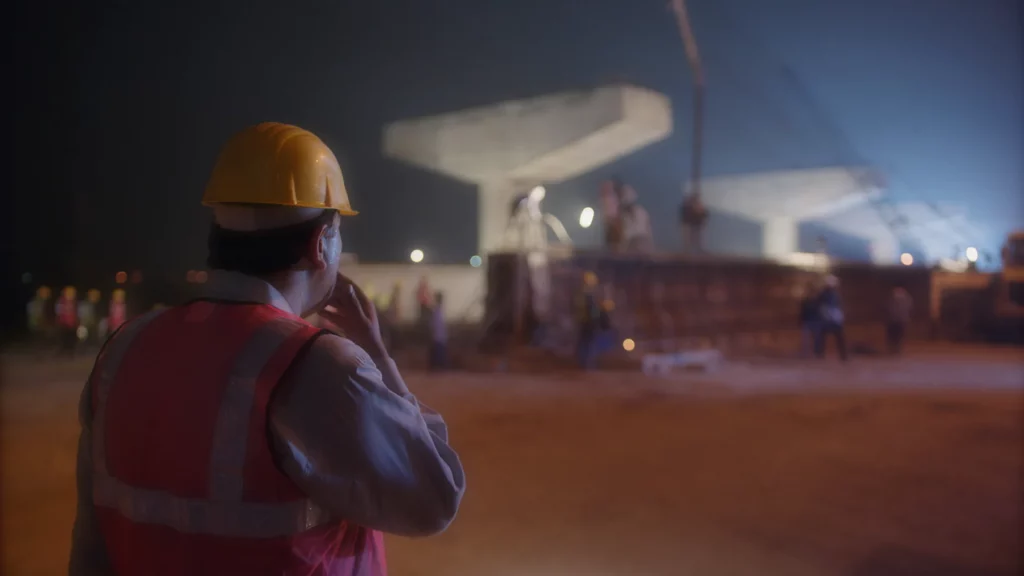Aryan Tauqeer reviews Once Upon a Time in Calcutta, Aditya Vikram Sengupta’s cinematic letter to the city of Kolkata.
Earlier last year, the incumbent Bharatiya Janata Party (BJP) in India aroused controversy when an advertisement praising the party’s development of Uttar Pradesh province featured the Maa flyover in the city of Kolkata (West Bengal). The error (or malicious misrepresentation, as it could alternatively be viewed) came under fire for reasons all too obvious, but it also raises the question of how the term “development” is construed in the first place. Towering infrastructural achievements like the Maa flyover are perhaps the clearest representation of progress, but such developments are always targeted toward fulfilling the needs of a particular group of people, and some people are always left behind, unable to hold onto the rails of the train of “progress” bulldozing everything in its way. Aditya Vikram Sengupta’s Once Upon A Time in Calcutta is a tapestry of urban life woven by a Kolkata native that situates the city’s denizens as inseparably connected to its material architecture.

In constructing the narrative arcs of an ensemble of Kolkata’s residents, Sengupta hones in on a crumbling theatre as its focal point. Surrounded by a ring of seats, a lone wooden platform, subject to the appetites of termites, stands alone. A stray cat awakens from a slumber on one of the seats, yawns and trudges out of the theatre, leaving it without its sole audience member. Television host Ela, a key figure tying together multiple fates in this ensemble, briefly alludes to its history whilst conversing with a friend in the middle of the Hooghly River; the theatre was once a perpetual packed house, where her mother, a cabaret dancer, would sell out shows every night. Now, it exists as a mausoleum of memories at the bottom of the housing complex that Ela resides in with her husband, Shishir. In documenting these shared spaces, Sengupta’s approach is remarkably disaffected, in that it does not necessarily strive to locate beauty or grace in its surroundings. Instead, it is content to observe as Shishir walks their dog and does laundry, whilst Ela conspicuously leaves a world of distance in refraining from speaking to him. This formal asceticism extends to its script, which is largely composed of procedural descriptions of tasks and responsibilities to be fulfilled. Another resident of this shared space, Raja, occasionally descends into the theatre to discuss the deteriorating conditions of the house with Bubu, who is its unofficial “manager”.
In centering these characters around the theatrical space and using its history of performance as a conduit to explore the everyday performances enacted by its characters, the film recalls Tsai Ming-Liang’s Goodbye, Dragon Inn. Like that film, Sengupta’s urban portrait configures the ”death” of a theatre as a reflection of the aging of its inhabitants, as well as using the focus of the venue (a rising platform here, a cinema screen there) as a way of locating the commonality of melancholy among those occupying it. One of these performances is that of Ela’s, who finds in two men- one a friend, and another a benefactor- an escape from the confines of domesticity she clearly has great disdain for. This infidelity is never the source of histrionic emotional conflicts between those involved in it, and is instead situated as one of the many necessary adjustments one needs to make in order to keep up with the speed of progress in Kolkata. Simultaneously, Raja’s profession requires him to collect deposits for a shady investment firm from those seeking an escape from poverty. Both Ela and Raja construct narratives of necessity to negotiate any ethical qualms- morality is a luxury that can only be afforded by those whose livelihoods are not dependent on the whims of others. Yet, among this portrait of disaffected exploitation, Sengupta locates some semblance of affection- when Raja and his father are evicted by Bubu on the shaky grounds that they are conspiring against him, the former’s customer-oriented demeanor shatters, giving way to unbridled rage. Sweeping emotional currents and disaffected acts of exchange therefore exist on the same continuum.

In spatializing these characters’ narrative arcs, Sengupta ties each of them to a physical space, be it a housing complex, skyscraper or a motorbike. They are therefore bound to these spaces by means of existential symbiosis, which is illustrated in how attempts to sever ties with them inevitably drives them back to their walls. Simultaneously, however, Sengupta also identifies liminality within these spaces. Although ancestry binds Ela to the decaying labyrinth that she calls home, her residence is subject to a range of social actors-early on in the film, a customer service employee at the bank she visits informs her that she is ineligible for a home loan, thereby severing what was alluded to as a permanent connection to the home in which her mother resided. Similarly, Raja promises his partner that they will one day be able to travel abroad on a holiday- the shadow of the Dakshineswar Kali Temple looms tall over them, suggesting concrete consolidation of this vow. When Raja is evicted, however, he is lost in streams of capital, metamorphosing into just another one of the many poverty-stricken people his job entails him to exploit. The illusion of stability embodied by such physical structures is embodied throughout the film in the form of diegetic audio commentary, with newscasters proudly professing to the soundness of a new overpass being constructed. Similarly, the severing of Ela’s seemingly permanent connection to her home embeds her within a transactional economy, where she caters to the emotional demands of multiple men in order to consolidate a new residence. Sengupta therefore illustrates a sprawling deliberation on social mobility – or, as the failure to achieve it suggests, its absence.

Although much of the film’s compositions are intentionally economical in shrouding urban environments in darkness (so as to draw attention to infrastructural failings), the incorporation of backlighting and chiaroscuro into certain images heightens the tragedy inherent to the film’s fatalistic view of social mobility. During the construction of what appears to be a theme park, the camera pans over the illuminated teeth of a plastic dinosaur statue. Flashes of light produced by welding and construction work in the background illuminates the skeleton of a building against the backdrop of a polluted night sky. As Bhaskar, one of Ela’s partners, stares towards the sky whilst crouched on the ground, a piercing shriek tears through this temporary solemnity- a worker has been injured by a collapsed beam. He is carried away in front of Bhaskar, who reacts with mild exasperation as he lights a cigarette. Though it occasionally veers towards replicating tiresome indie clichés by trying to identify profundity in mundanity, moments such as the construction yard digression in Once Upon a Time in Calcutta render the film an affecting observation of ennui in late capitalism.
Once Upon a Time in Calcutta‘s UK release date is yet to be announced, but you can watch the trailer here:




